Mental health in the AI job market: Coping with constant change
As a recruitment agency, we know that AI technologies reshape the way businesses operate, automating tasks, enhancing efficiency and driving innovation, they also bring significant shifts to the nature of work itself. While these advancements promise progress, they also pose emotional challenges for workers and job seekers alike. In a country where employment is already a pressing concern, the added complexity of AI-driven change introduces new layers of uncertainty, fear and psychological strain. This blog explores how the rapid evolution of the job landscape is affecting mental health and more importantly, how South Africans can build the emotional resilience needed to not only cope with constant change but to thrive within it.
The South African job market meets AI
AI has become a very real aspect in the South African job market. Companies are streamlining operations and using intelligent systems to optimize productivity.
But here’s the catch: while new AI jobs are being created, others are being redefined or phased out. This leaves many workers wondering, “Will my job still exist next year?” or “Do I need to completely change my career?”
These thoughts are not just economic concerns, they strike at the heart of our identity and emotional well-being.
Why AI-induced change impacts mental health
For most of us, a job is much more than a monthly income, it’s tied to our sense of identity, stability, daily routine and even self-worth. Work provides a rhythm to our lives and a sense of belonging in society. So when Artificial Intelligence (AI) begins to shift, replace or redefine roles, it doesn’t just affect productivity, it affects people on a deeply personal and emotional level.
AI-driven change introduces uncertainty into areas where we typically crave security. It redefines traditional job roles, shifts required skill sets and alters the landscape of career progression, often faster than individuals can adapt. These rapid changes can deeply impact mental health in various ways:
1. Anxiety: The fear of being left behind
As AI continues to automate tasks and make certain roles redundant, many workers live with a persistent worry.
In South Africa, where employment is already a major challenge, this anxiety is magnified. People fear not just job loss, but losing their livelihood, their ability to support families and their sense of independence. The pressure to “stay relevant” in an AI-powered world can create a constant state of fear and anticipation, triggering anxiety that spills over into daily life.
2. Chronic stress: The weight of constant learning
With AI rapidly changing job requirements, employees and job seekers often feel they’re in a race with no finish line. They must keep learning new skills, tools and technologies, sometimes on their own time and budget. This pressure, especially if you’re already working full-time or job hunting, can lead to chronic stress.
And stress doesn’t just impact your mood. Over time, it affects sleep, appetite, relationships and even physical health. For those trying to break into the job market or transition to new roles, this kind of stress can feel paralyzing.
3. Imposter syndrome: “Am I really good enough?”
Many professionals, especially mid-career workers, grapple with self-doubt when faced with unfamiliar AI tools or data-driven processes. Even those who are experienced and competent in their roles may feel like they’re falling behind or being “outsmarted” by younger, more tech-savvy colleagues.
This psychological pattern is known as imposter syndrome, where capable individuals question their abilities and fear being exposed as frauds. As AI redefines competence, workers may feel less confident in their own value.
4. Isolation: A disconnect in a digital-first world
AI often streamlines communication through bots, platforms and automated systems. While this boosts efficiency, it can also reduce genuine human interaction, especially in remote or hybrid working models.
In a country like South Africa, where community and interpersonal connection are culturally significant, this digital disconnect can feel especially alienating. Workers may feel less seen, less heard and ultimately less valued in AI-led workplaces. For job seekers, interacting with automated hiring platforms rather than humans can feel cold and demoralizing, especially when responses are delayed or impersonal.
Adapting with emotional resilience: A lifeline in uncertain times
While AI-induced changes can feel overwhelming, they also present an opportunity to grow stronger both emotionally and professionally. Emotional resilience is not about avoiding stress or pretending change isn’t happening. It’s about developing the ability to adapt, recover and thrive in the face of uncertainty.
In the constantly shifting landscape of South Africa’s job market, emotional resilience has become one of the most critical tools a worker or job seeker can develop. Let’s explore how.
1. Shift from fear to curiosity
When facing the unknown, our first instinct is often fear. But what if we replaced fear with curiosity? Instead of asking, “What if I can’t keep up?” ask, “What new skill could I learn today that excites me?” Embracing change with an open mind not only reduces anxiety but also sparks creativity and drive. Remember, AI might replace repetitive tasks, but it can’t replace the uniquely human ability to think differently.
2. Focus on what you can control
It’s easy to feel powerless when industries evolve and job roles disappear. But focusing on things outside your control only adds to the emotional burden. Instead, redirect your energy to areas where you can make a difference: improving your skill set, updating your CV, or reaching out to professional networks. Even small steps can restore a sense of control and confidence.
3. Strengthen your support systems
Resilience doesn’t mean doing everything alone. In fact, one of the most powerful ways to build emotional strength is through connection. Talk to family, friends or trusted colleagues about what you’re experiencing. Their support and perspective can help ground you.
4. Practice self-care with intention
You can’t pour from an empty cup. Whether you’re job hunting or navigating change at work, it’s essential to take care of your mental, physical and emotional health. This doesn’t mean extravagant wellness routines. It could be as simple as:
- Taking a daily walk to clear your mind.
- Writing down your thoughts and goals.
- Limiting exposure to negative news or social media.
- Practicing deep breathing before interviews or presentations.
These small habits build emotional resilience over time and help you stay grounded in moments of pressure.
5. Redefine what success looks like
In an AI-driven job market, success is no longer defined by staying in one role for decades. It’s about agility, adaptability and lifelong learning. Let go of the outdated notion that career changes are a sign of failure. In today’s world, they are a sign of evolution. Each step, whether sideways, forward or even backward adds to your experience and resilience.
6. Seek out professional guidance
Sometimes the best way to stay emotionally resilient is to ask for help. Career transitions are easier to navigate when you have someone guiding you, someone who understands the market, sees your potential and helps you connect the dots.
By nurturing emotional resilience, you’re not just surviving the AI revolution, you’re positioning yourself to thrive in it. The future may be uncertain, but with the right mindset and support, it doesn’t have to be frightening. It can be full of possibilities.
Moving forward with confidence and clarity
The rise of AI in the job market may be inevitable, but how we respond to it is entirely within our control. Yes, change can be unsettling, especially in a country like South Africa where employment challenges are already deeply rooted. But within that disruption lies an opportunity: to grow, to adapt, and to build a more emotionally resilient workforce with stronger mental health that’s ready for the future.
We’re here to help you do just that. From expert career guidance to tailored job opportunities, our mission is to support you through the evolving world of work.











